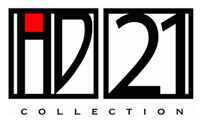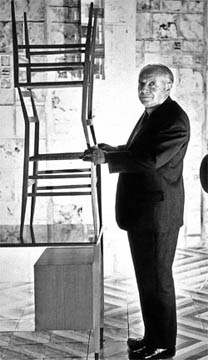Product Description
Gio Ponti / Del Campo enamel bowl c. 1955


GIO PONTI (1891-1979) Italy
DEL CAMPO Italy
Graphic enameled bowl c. 1955
Silver foil enameling on copper with a striated silvery white body with a dark silver grey modernist graphic.
Marks: del campo, ITALY (etched marks)
For more information on Ponti and Del Campo see: Gio Ponti, ed. Ugo La Pietra (Rizzoli International Publications: New York, 1996); Gio Ponti: the complete work 1923-1978, Lisa Licitra Ponti (Cambridge, MA: The MIT Press, 1990)
8” square
1″ Height
Price: $3,200
Gio Ponti / Del Campo enamel bowl c. 1955
ARCHIBALD KNOX (1864-1933) UK
LIBERTY & CO. London
Cake tray with handle c. 1902-05
Hammered pewter with stylized leaf and berry motif in relief
Marks: MADE IN ENGLAND, “TUDRIC” RD449032 PEWTER, 0357 SOLKETS (retailer)
For more information see: The Designs of Archibald Knox for Liberty & Co., A.J. Tilbrook (London: Ornament Press Ltd., 1976); The Designs of Archibald Knox for Liberty & Co., A.J. Tilbrook (London: Ornament Press, 1976); Archibald Knox, ed. by S. Martin (London: Academy Editions,1995); Liberty’s 1875-1975, An Exhibition to mark the Firm’s Centenary (London: Victoria & Albert Museum, 1975).
H: 3 3/4” x W: 12”
